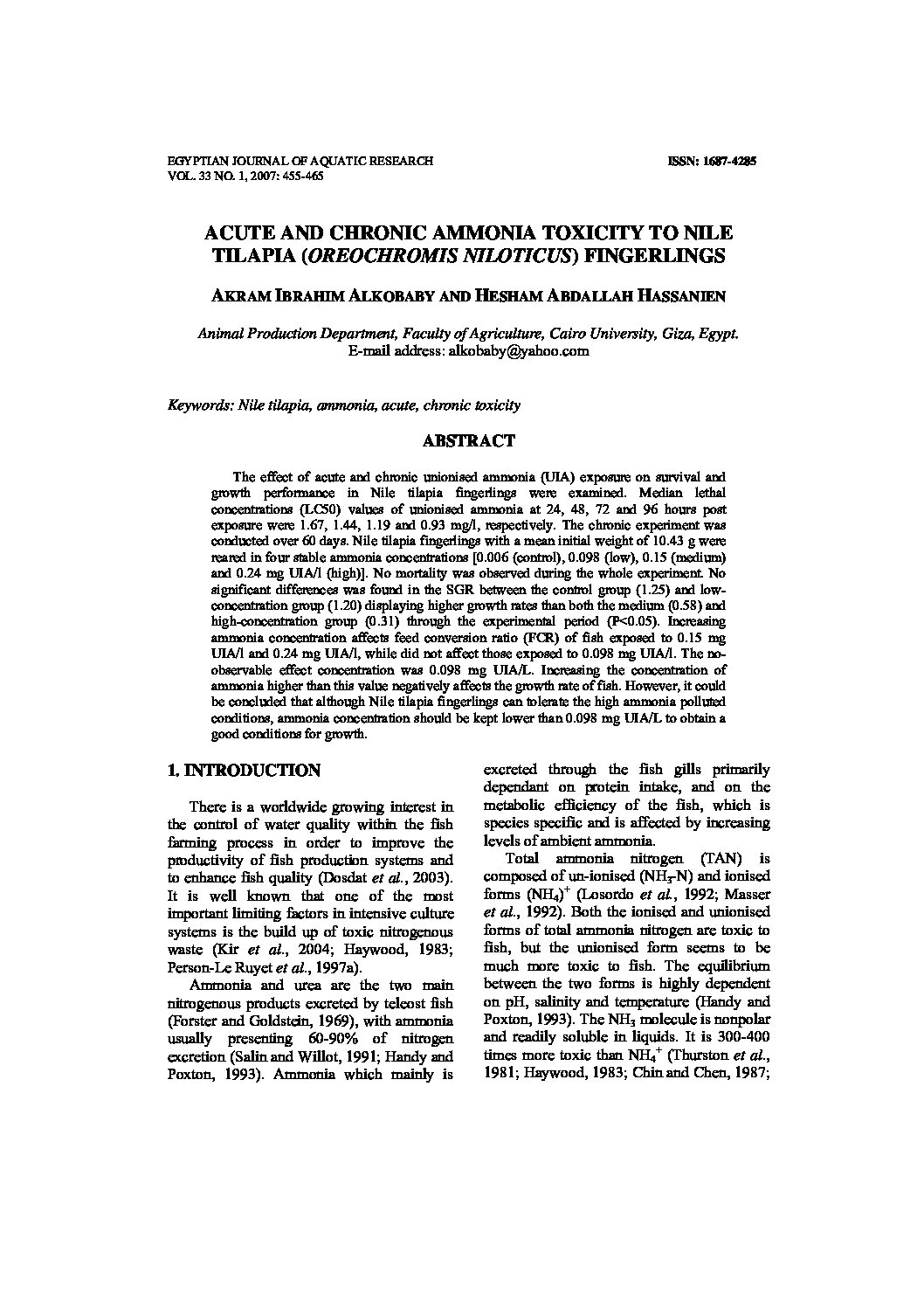Categories
vol-33IMPACT OF DRAINAGE WATER INFLOW ON THE
ENVIRONMENTAL CONDITIONS AND FISHERY RESOURCES
OF LAKE BOROLLUS
A. AL SAYES, A. RADWAN AND L. SHAKWEER
National Institute of Oceanography and fisheries
[email protected]
Keywords: Lake Brrollus, Water chemistry, Fishery resources and Drainage water.
ABSTRACT
The brackish water lake Borollus occupies a central position at the north between the
two branches of the Nile delta. This lake has a particular importance in the fish economy of
Egypt. Therefore environmental and fisheries investigation was carried out at the lake
during 2000 – 2002, where 15 stations covering the whole area of the lake were sampled.
The present study points out that:
1. The water transparency of the lake is low where the average Secchi disc depth ranged
between 21.14 cm and 43.89 cm.
2. The average water temperature attained its minimum in winter and ranged between
16.20 °C and 17.80 °C. The highest temperature was in summer where it ranged between
28.33 °C and 28.52 °C.
3. The recorded pH values indicate that the lake water was generally in the slightly
alkaline side and optimum for fish to live in.
4. The eastern part of the lake exhibited higher chlorosity values comparing with the
middle or western areas as a result of mixing with the penetrated sea water.
5. The whole water body of the lake is well oxygenated where the average values of
dissolved oxygen ranged between 6.6 mg/L and 11.1 mg/L.
6. The most abundant species among the inorganic nitrogen compounds was the
nitrates. The average concentrations of nitrates in the water of the lake ranged between 1.23
µ gat/L and 7.165 µ gat/L.
7. The isolines distribution of phosphates concentrations indicate that such
concentrations were high at the south decreasing northwards.
8. The drainage water contributes in increasing silicates concentrations in the lake
water.
9. The sharp decrease in chlorosity of the lake water during the last 30 years greatly
contributed in changing the species composition of fish population in the lake.
10. The percentage weight of marine fish species in the experimental catch decreased
from 15.99% in 1973 to 1.81% in 2002, where the most of marine fish species did not exist
in the catch.
11. The percentage weight of Oreochromis niloticus increased from 19.70% in 1973 to
39.43% in 2002.







